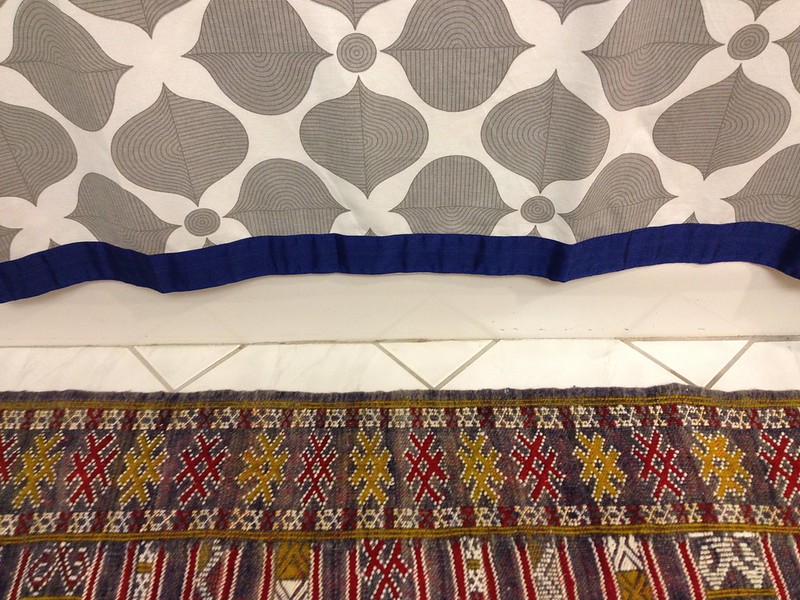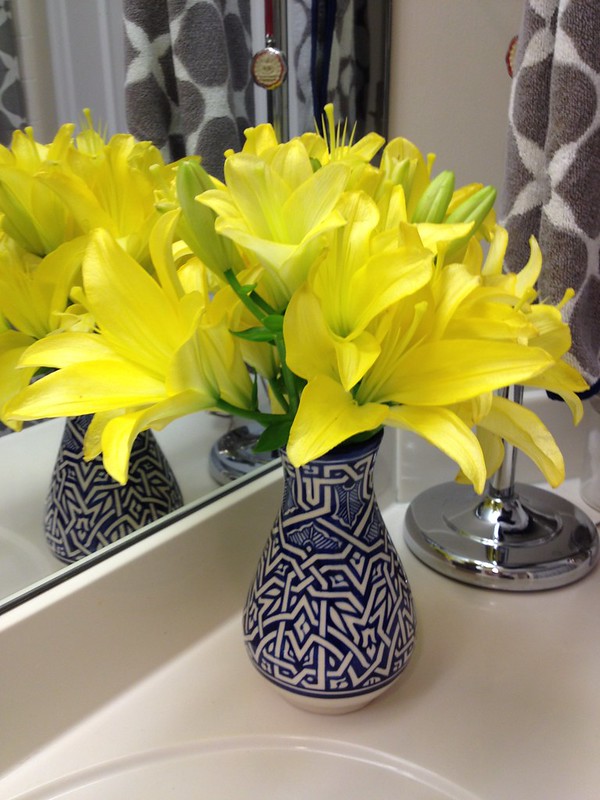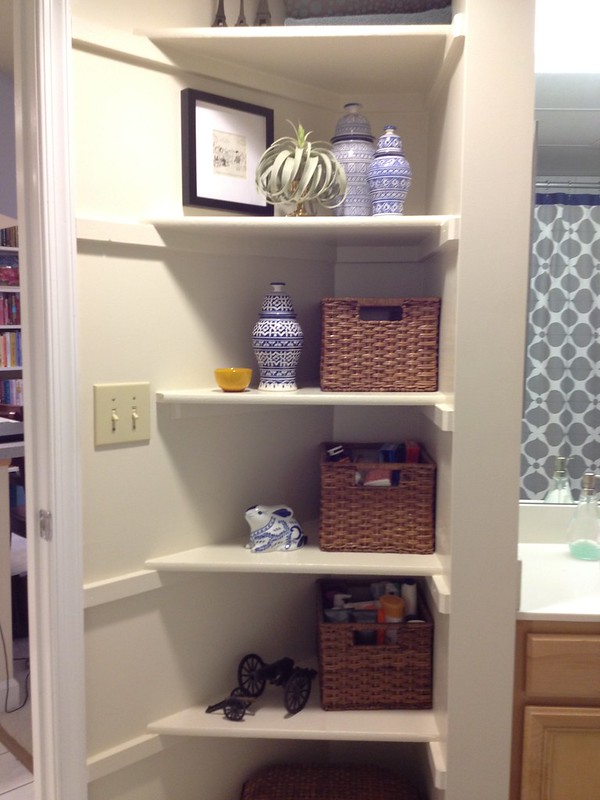As I mentioned in my post on Wednesday, I came to New York to interview law students applying to the firm’s recruiting program next summer. All of Thursday was spent doing just that: Between 9am and 5pm, I interviewed twenty students (trying all the while to figure out how to invent better interview questions and methods for keeping the kids from blurring together). After the last interview, I went into a series of meetings with other interviewers, the firm’s legal recruiting personnel and hiring partners until roughly midnight. It was long and tedious – and, frankly, a lot of it (especially those evening meetings) felt poorly organized and inefficient. I don’t mind working long hours when I feel I’m being productive, but I resent the hours when I feel like they’ve been wasted.
On Friday morning the interview team split up. One guy – who can’t stand Manhattan and couldn’t wait to get out – left on the earliest train possible. A couple of others took later trains so they could spend the afternoon working from home and see their families that night. I, on the other hand, had enough work to do (both recruiting-related and for clients) that I couldn’t afford to lose half the day to a train ride. I also had no intention of leaving New York without seeing some theatre and (hopefully) adding another Michelin star to my list.
So I spent the day working in the New York office. The views from the 42nd floor were excellent (as always), and it was good to catch up with some friends who work in that office. I wasn’t quite as productive as I would have liked, however; for some reason I just couldn’t bring myself to focus the way I needed to. Probably a result of fatigue and disrupted routine. By the end of the day I was tired and ready for an escape, for some theatre.
The theatre is always an escape, of sorts. You sit in the dark with a roomful of hushed and expectant folks watching as a band of players transforms an illuminated platform into another world using their bodies, a set, some lighting and the audience’s willingness to believe. But imagine entering the world of the play; seeing the actors up close and from all angles; chasing them down the halls and up the stairs; following them into their bedrooms; playing with the things in their drawers; reading their letters when they aren’t present; watching them murder each other; not rescuing them as they are murdered; standing aloof as the survivers crumble into madness and weep, naked and alone. Imagine moving, like a ghost, through the world of the play. That is an escape.
And that’s what I experienced at last night’s performance of Sleep No More. It’s an elaborate immersive theatre experience staged over five floors of an old hotel and three adjoining warehouses in New York’s Chelsea neighborhood. You make a “reservation” online and enter an inconspicuous unmarked building.
From there you enter an eery world – a fantastical mixture of gothic horror and Hitchcockian noir made real. You’re ushered through a dark and mazelike hallway to the reception desk, where you’re given your “room key” (a playing card) and then on into a plush red speak-easy lounge, where you wait for your card to be called. Once called, the gracious host – a sensuous woman poured into a long satin dress – takes you into a small room and gives you a mask and instructions: Never take off the mask. Don’t talk. Explore everything.
 |
Everyone wore one of these.
Except the actors. |
Then you enter the elevator and the world of the play – which I’m finding so very hard to describe. I was let off the elevator into a floor that looked like what a luxurious Victorian hotel would have felt like in the 1930s (i.e., grand but shabby and super creepy). I wandered alone in the dark for some time, exploring. Other masked visitors wandered past me in silence. Eventually I came upon a young woman stealing furtively from room to room – I followed her. She went into an office; started rifling through files; discovered a photograph and, startled, bent over it. From the back of the room a bearded man approached and struck her. They fought. She produced a photograph from her purse that matched the photograph in the file. Everything changed. The man explored her body, looking for marks on her arm and at the nape of her neck. They kissed. Then she rushed out (I ran after her) and into a seedy bar, where the bartender brought her a shot of whisky. She sat looking morose. Then, naturally, a man ran into the room and died on the pool table. The woman ran out of the bar – and I decided to follow her (no point in following a dead guy).
But I lost her in the dark. So I wandered some more. Upstairs. Into a jazz club where a woman in a red gown stood alone in the dark. Then two others. Witches. MacBeth entered, bloody; the witches went crazy. An orgy, with blood, sex (not actual sex, but they were naked), animal heads, and prophecies of future kings and moving woods. The orgy ended and the foursome scattered; I followed the male witch, who went into a shower where I couldn’t see him. So I followed the bald woman witch, who washed herself in a basin. Then I tried to find MacBeth and got lost.
So I wandered. Into a hospital. Insane asylum. With instruments of torture. Crosses. Through a graveyard with weeping angel statues. Into a mirrored bedroom with a bloody bathtub and mirrors. Back downstairs to where I’d found the first woman. Only there I found a woman in the remains of an evening gown. Lady MacBeth. Raving mad, she roamed the hall until a bloodied MacBeth joined her and they proceeded (with me in tow) downstairs to a grand banquet hall. They sat at table where also sat the murdered king and pregnant Lady MacDuff, the three witches, and later, bloody Banquo. A gruesome toast, then all dispersed into the dark.
I continued to follow Lady MacBeth. She went upstairs, back to the hospital. A nurse took the lunatic woman into a room with a row of bathtubs, undressed her, placed her in the tub. Lady MacBeth bathed; collapsed in tears. Then wrapped herself in a blanket and went out through the cemetery, past the angels, and into the grand bedroom, where she found a letter (telling her the king was coming) and danced. I left her there to find the others.
Somewhere, I found MacBeth. Followed him through the halls and down stairs (which was tricky, because he ran fast, skipping steps) and into the banquet room again, only this time on the balcony. He watched as a ballroom scene unfolded below. A glowing (and sane) Lady MacBeth danced with the king (still alive); the MacDuffs arrived arm in arm; the witches were there, only they were still respectable courtiers. Then the party dispersed and Lady MacBeth left with the king. At this point I realized I’d lost track of MacBeth, so I followed Lady MacBeth and the King into a music room, where they danced and laughed before separating again. I started to follow the King but then changed my mind and went after Lady MacBeth – and so lost both of them. Unless I didn’t lose Lady MacBeth that time, in which case I followed her upstairs to the great bedroom, where she and MacBeth had a passionate and violent dance that may have been a love-making scene or the scene in which she goads him into killing the king (probably both). At which point I lost both of them.
More wandering. Over the next two hours I saw the ghostly banquet scene again, also the happy ballroom scene. I saw MacBeth murder Lady MacDuff (he broke her neck after smashing her pregnant belly against the wall; it was horrifying). I found the first woman again – the one with the photo – only this time she was packing her suitcase. (I still had no idea what she was doing or how she fit into the story, if at all.) MacBeth smothered the king. Ghostly banquet scene, again. Followed MacBeth but lost him in the dark. Found the MacDuffs at home, domestic happiness, getting ready to go to the ball. Followed them there, watched the scene (this time from ground level) and decided to follow Banquo. He did some weird things with Lady MacDuff, then found the murdered king. He and two other men took the body to the crypt and wrapped it up, then left. I found them drinking in that same seedy bar from earlier. MacBeth arrived and fought Banquo, killing him with a brick behind the counter. Pursued MacBeth but lost him again. Wandered until I found Lady MacBeth going mad in the hallway again, just before meeting up with MacBeth and going in to the ghostly banquet scene. This was the third ghostly banquet scene – and the last one. This time the party didn’t disperse; instead, the ghosts combined and hanged MacBeth from a noose in the middle of the room.
The End.
Or something like that. There was more; so much more. And that's only the part I saw. It was enormously fun, frustrating, boring, scary, riveting, confusing, weird and cool. A remarkable theatrical experience unlike anything else I’ve ever experienced. I didn’t quite know what to think of it as I made my way through it, and when I left I told myself that I’d enjoyed it but didn’t understand why people would go multiple times. But the more I think of it and replay it in my mind, the more brilliant I think it is. It has sparked my imagination – in a deep and involuntary way, like dreams do – more than any other theatre I’ve recently seen. I totally want to see it again. And again.



































